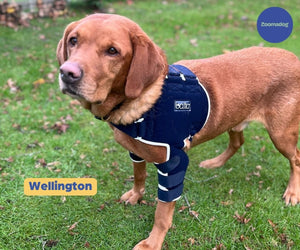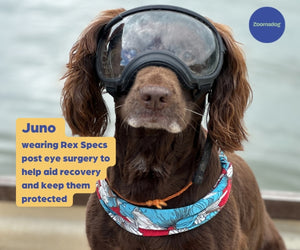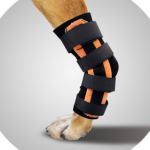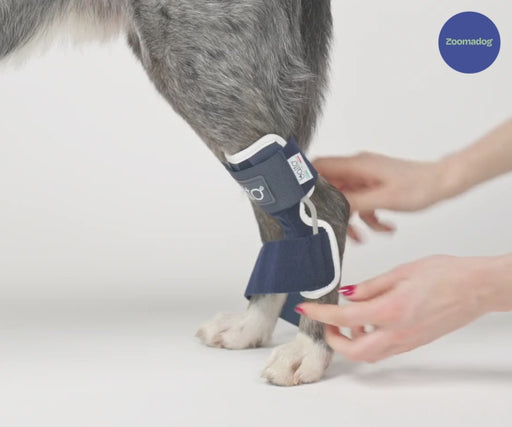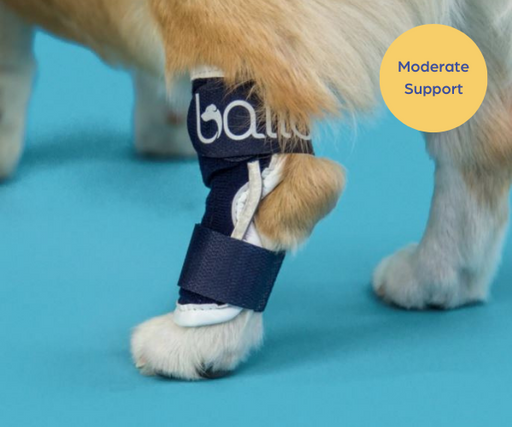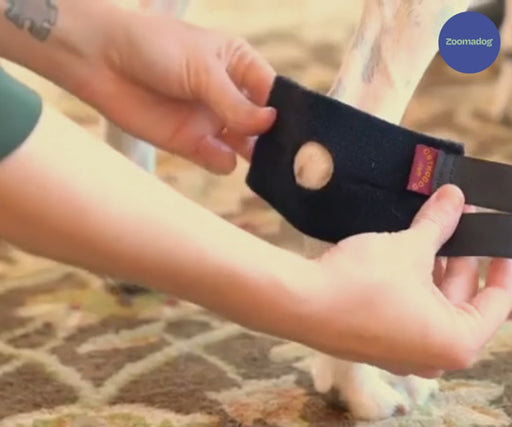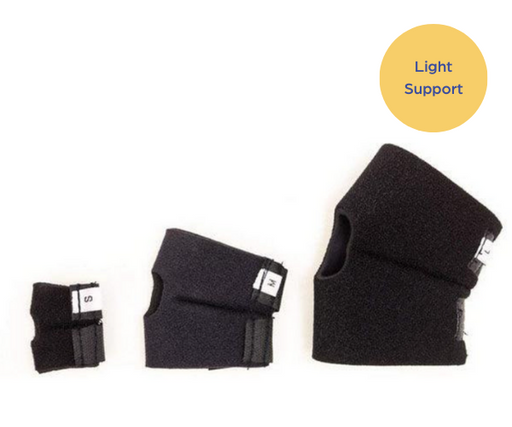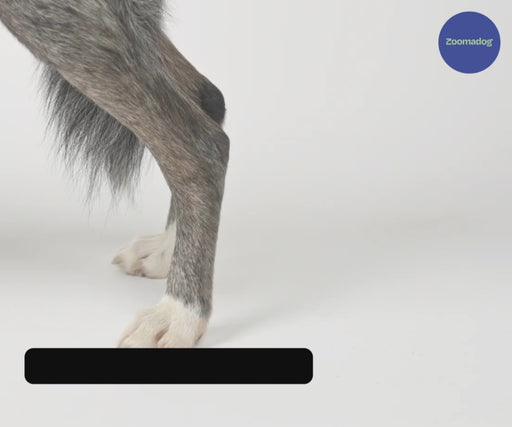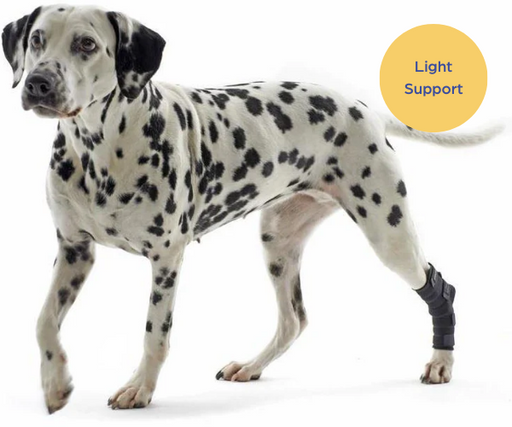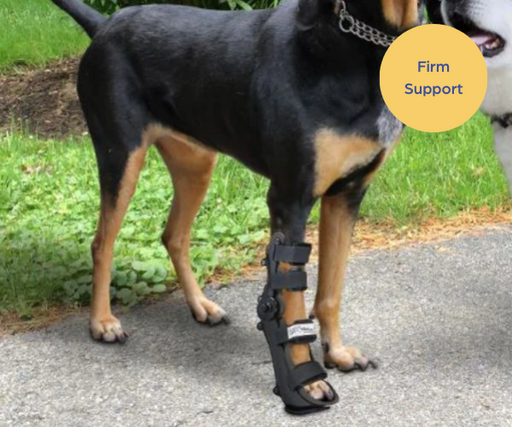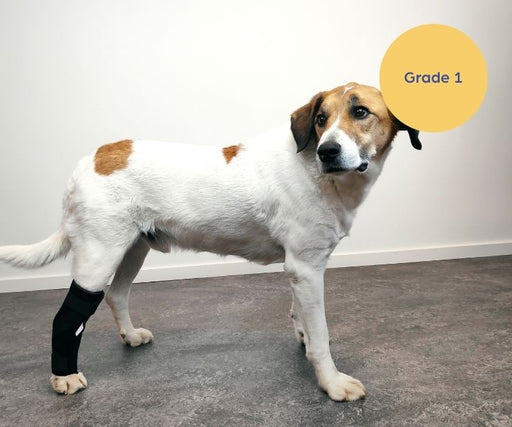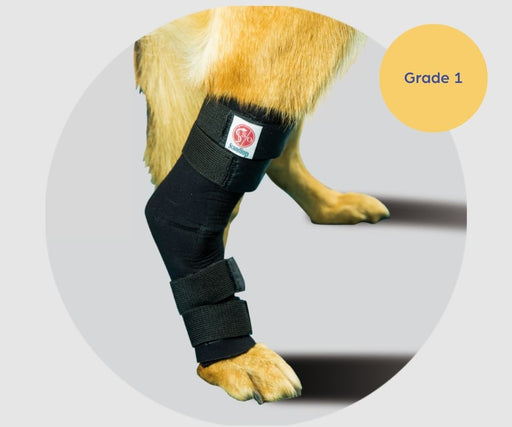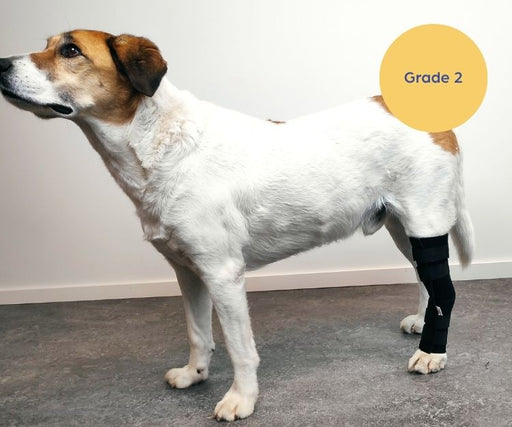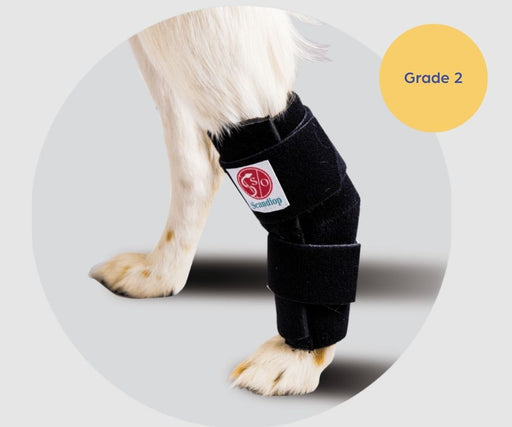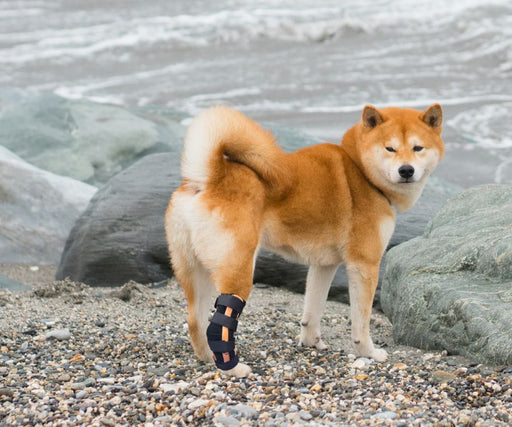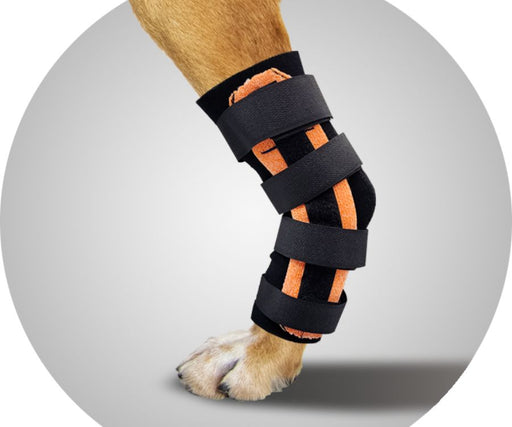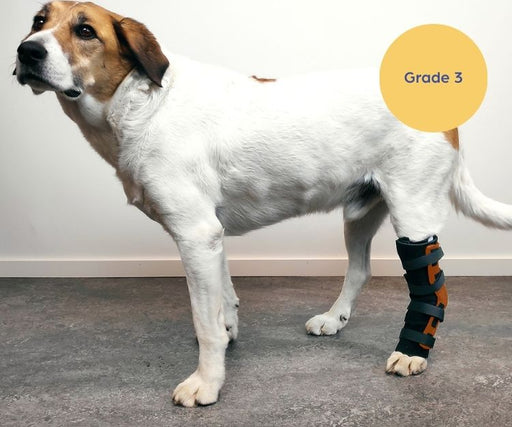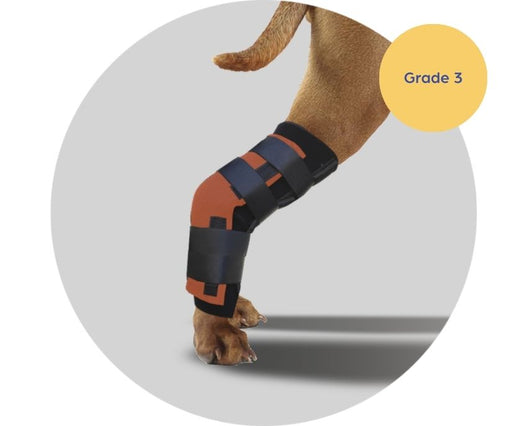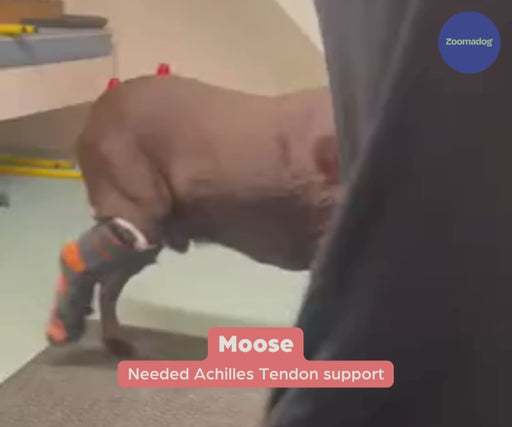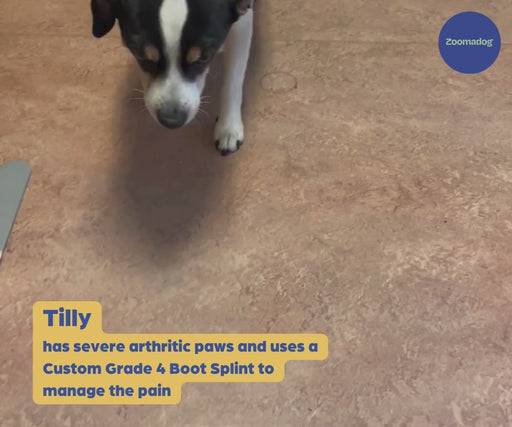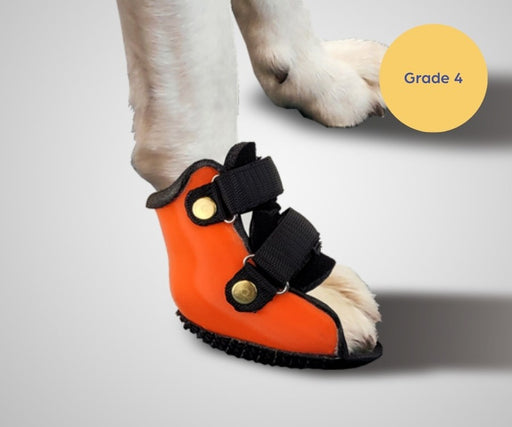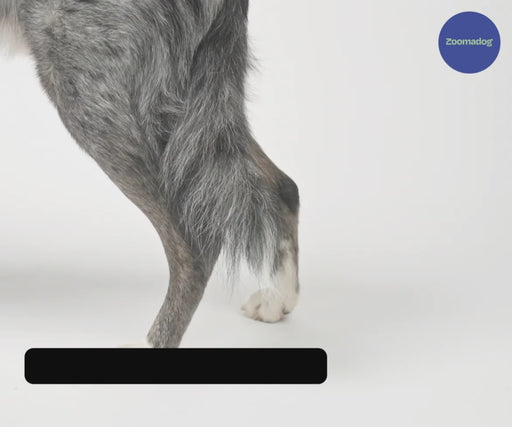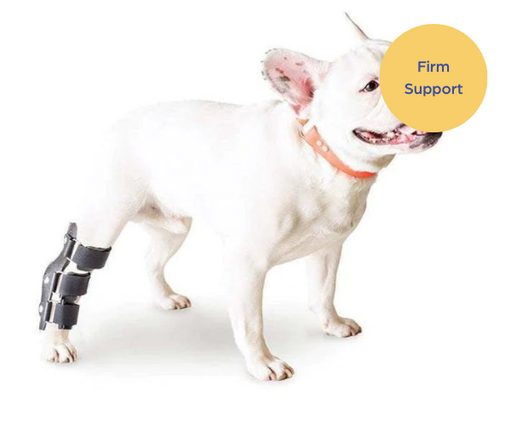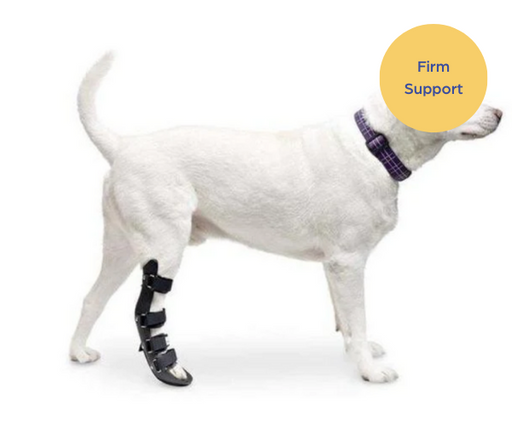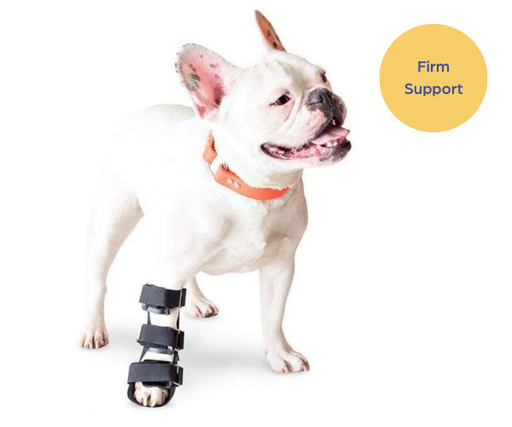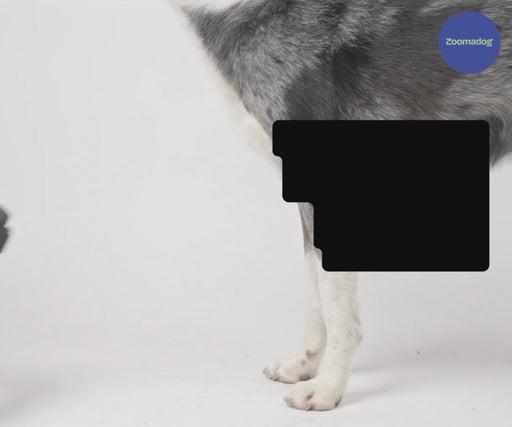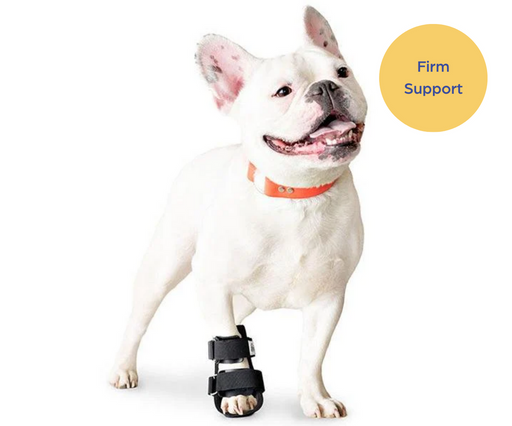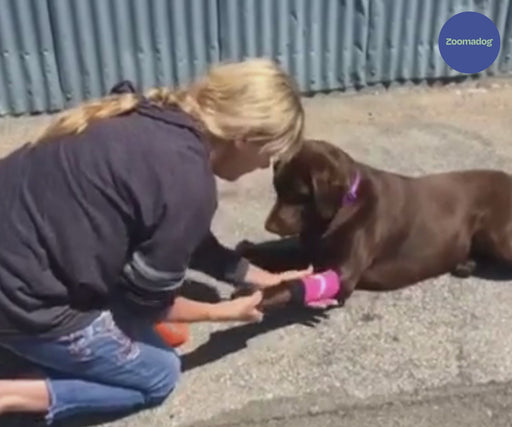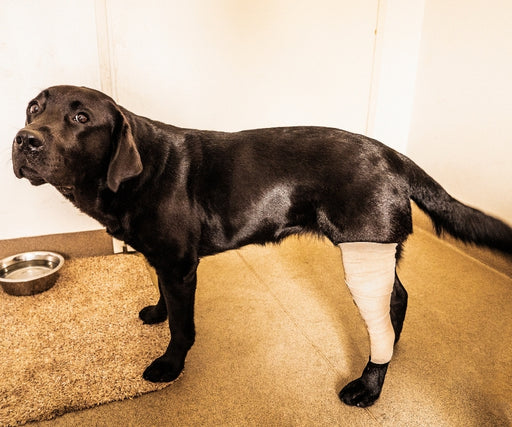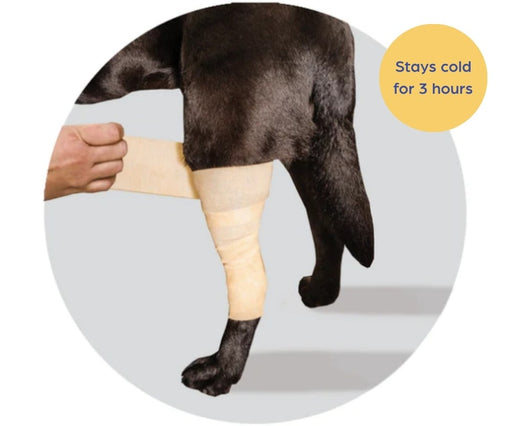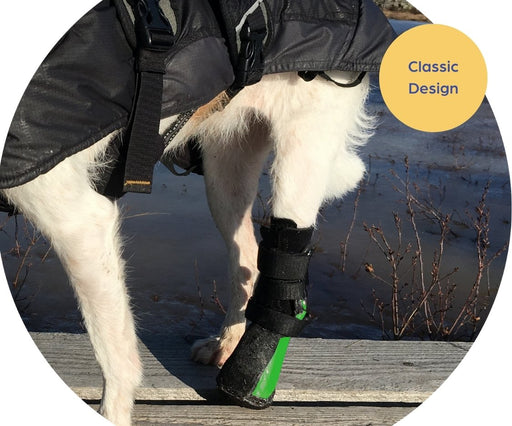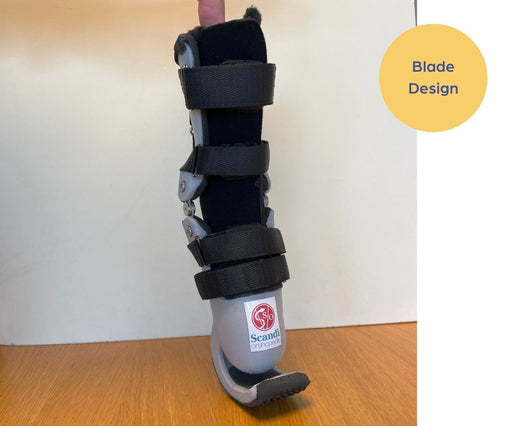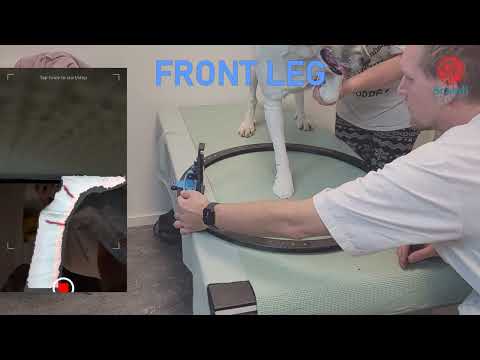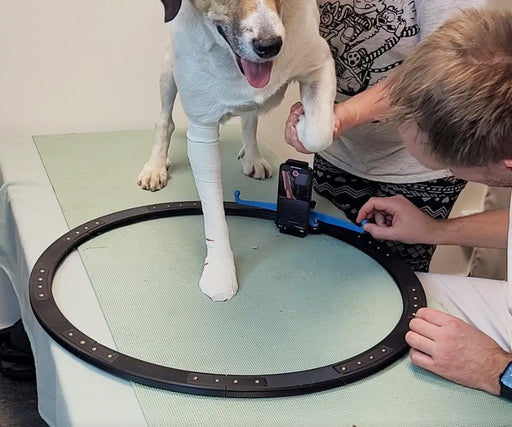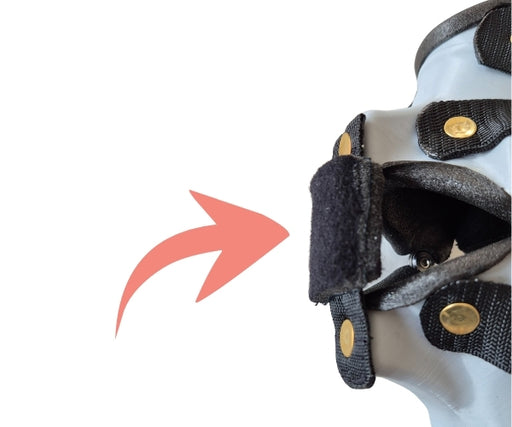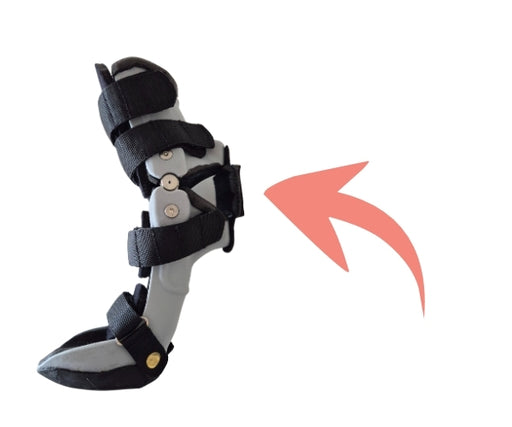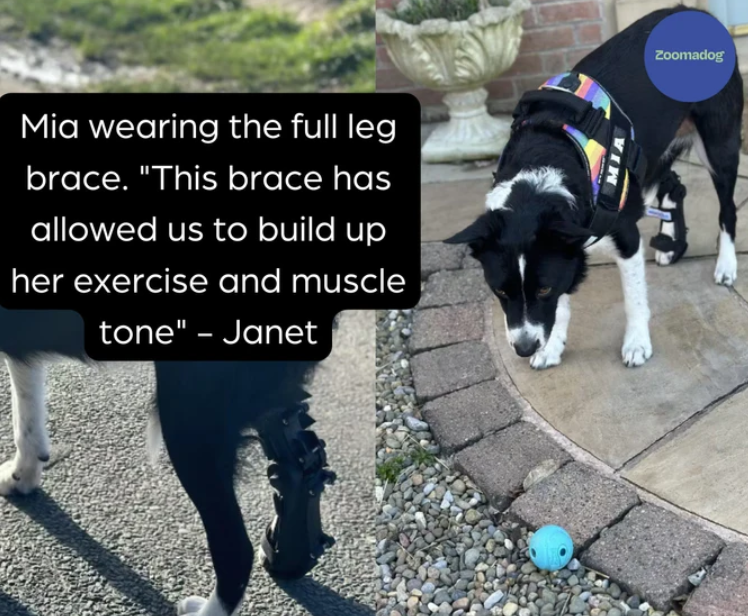When is a Rear Leg Dog Support Right?
If your dog is weak on their rear leg, a support will help stabilise them. Perhaps they have a limp, pulled a ligament, have joint issues, arthritis, stiffness or swelling. In these cases a leg support will strengthen your dog’s leg so they can do more exercise.
Even if your dog is having surgery, use a rear leg support, wrap or dog leg splint pre-surgery. This will stabilise and reinforce the joint, reduce inflammation and prevent further damage.
Post surgery, extra support will speed up healing and rehabilitation.
How will a Rear Leg Dog Support Help?
When your dog has rear leg weakness because the joint is injured or unstable, stabilising the joint will help speed up healing, and prevent the problem getting worse.
Rear supports stabilise the joint when it’s not going to heal on its own, or surgery isn’t possible. Wearing one can also help with pain management. Usually a dog can be more mobile for longer with support, than without.
How to Pick a Rear Dog Leg Support?
Rear leg muscle / tendon strains, or mild arthritis, will benefit from wearing light support, which can also prevent re-injury to a vulnerable area. A wrap or support reminds your dog to be careful in their movements.
Moderate support will help when the joint is weakened by an injury, such as an Achilles tendon or ligament tear, tendonitis, or a condition such as degenerative joint disease.
Choose a rigid splint for serious injuries such as a bone fracture, joint dislocation, full tendon or ligament rupture, which causes the hock to buckle or drop to the ground. This will give the firm support needed.
If your dog is knuckling or paw dragging, please look at the Maximus PawsUp Superflex knuckling boots.
Read more here about dog hock injuries and causes of rear leg weakness in your dog.




